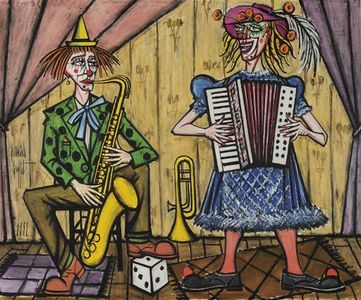
Bernard Buffet’s favorite themes include the horrors of war, mythology, bullfighting, and of course the circus. His clowns, famous throughout the world, have become emblematic of his peculiar universe, gloomy and miserable, with a breath that makes him a worthy successor to the great Goya.
Buffet’s popularity peaked in the late 1980s when some of his paintings, particularly his clowns, sold for more than five million francs.
The popularity of his clowns was largely due to Buffet’s ability to capture the mood of post-war French society. Its dry, sharp, black lines seem to be inherited from years of suffering and deprivation.
His clowns testify above all to the existentialist anguish that inhabited the painter until his suicide in 1999. Buffet didn’t like the average person he found “wicked” and “ugly” (Mon Cirque, 1968). The clown reveals, dramatizes, and magnifies the inside trauma of humanity. In 1968, Buffet staged “Cirque du monde”. In it, Auguste asks the phlegmatic questions: “And you, which circus do you belong to?”




